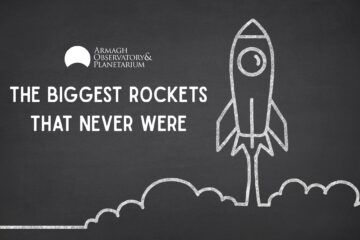By Apostolos Christou, Researh Astronomer
Every 26 months, the positions of Mars and the Earth align in such a way to allow probes launched from Earth to reach Mars (see how to calculate launch windows here). The next such launch window has just opened, with three separate missions under starter’s orders to set off for the Red Planet.
First off will be Al-Amal, a mission funded by the United Arab Emirates and designed, built & run by a team of UAE scientists and engineers in collaboration with foreign research institutions. This marks the first deep space mission attempt by a country in the Arab world. Al-Amal, which translates as “Hope” from arabic, will launch on a Japanese H-IIA rocket from Tanegashima Space Centre on the 14th of July and is scheduled to arrive at Mars after a 200-day long journey. Upon arrival, it will effectively become a weather satellite, studying the Martian atmosphere and climate for a period of two years.
About a week after the launch of Hope, it will be China’s turn to “shoot” for the Red Planet with a massive orbiter/lander/rover combination, carrying a complement of no less than 12 scientific instruments. The mission – christened Tianwen-1 or “Heavenly Questions” – is expected to reach Mars in February next year. This is actually China’s second foray into Mars exploration. Back in 2011, a small Chinese satellite, Yinghuo-1, rode alongside the Russian Phobos-Grunt mission but became stranded in Earth orbit when the rocket failed to give Ph-G the final push to allow it to reach Mars. This time the Chinese are doing it all on their own, bolstered by the recent success of their Chang’e lunar landers and the successful return-to-flight of their Long March 5 rocket last December, the only rocket in the Chinese inventory powerful enough to lob the 5-ton Tianwen towards Mars.
Last but definitely not least, NASA is set to launch its own rover mission at the end of the month, to follow up on the earlier discoveries by the fantastically successful Spirit, Opportunity & Curiosity missions. The new rover, named Perseverance, should touch down on the floor of 50-km Jezzero crater at the rim of the 1500-km-wide Isidis basin in early 2021. The main objective is to look for evidence of past microbial life either on or under the surface and cache interesting samples for return to Earth by the missions to follow. The rover is powered by a nuclear thermal-electric converter system, meaning it is largely impervious to the dust storms that ravage the Martian surface from time to time and can even operate at night.
A novelty of the mission is a tiny solar-powered helicopter, named Ingenuity, that is expected to fly in the vicinity of the rover for a few minutes every day. Ingenuity will demonstrate the practicality of powered flight in the thin Martian atmosphere and clear the path for more ambitious aerial exploration ventures on Mars and other planets with an atmosphere.
[Update 21st July 2020]: The UAE “Hope” probe was successfully launched on the 19th July (BST). The first Arab mission to Mars is now under way!
[Update 27th July 2020]: China’s Tianwen-1 is on its way to Mars, following launch on the 23rd of July. One more to go!
Further Reading:
Guide to this year’s Mars launches on the Planetary Society blog.



0 Comments